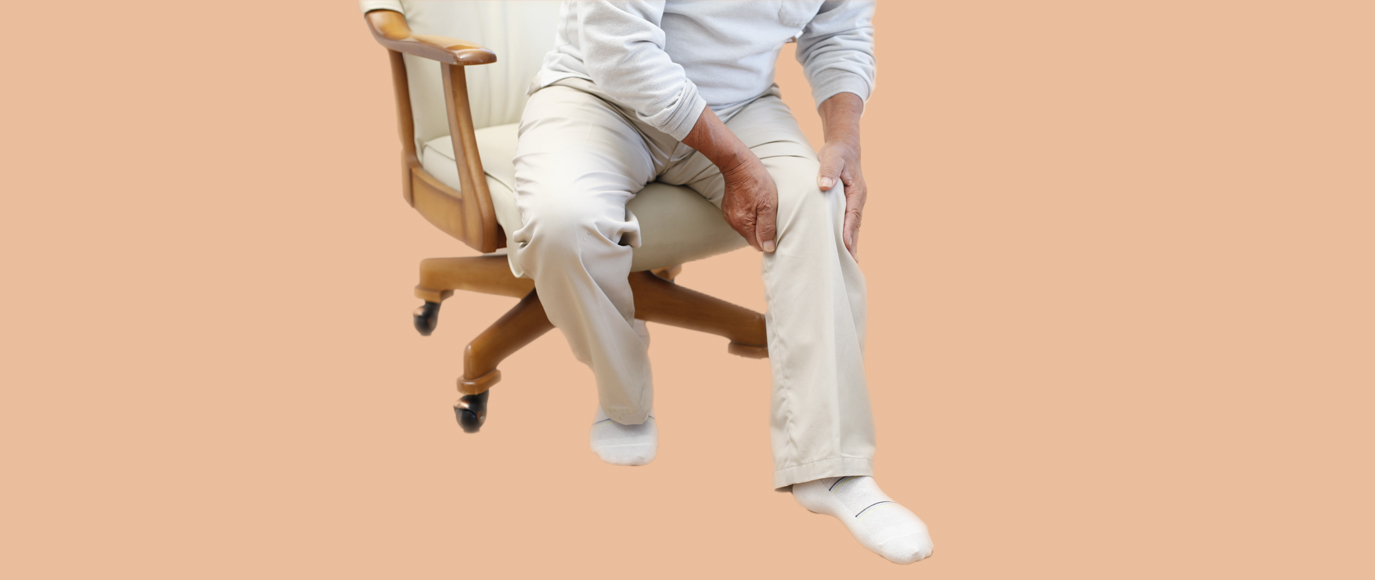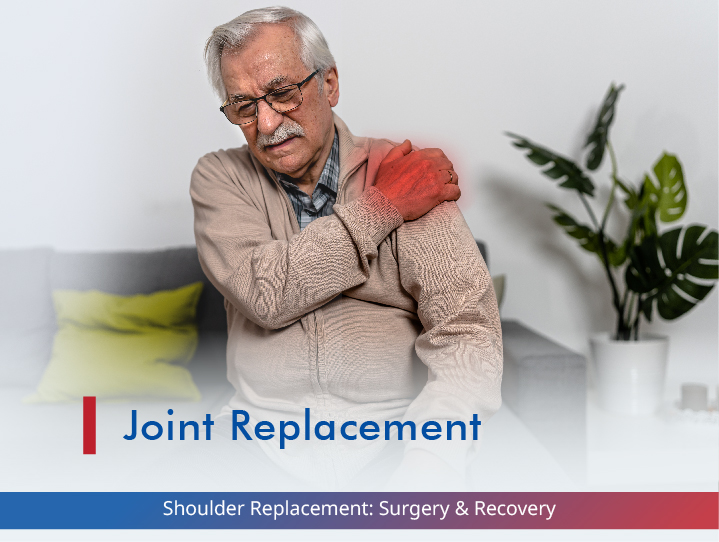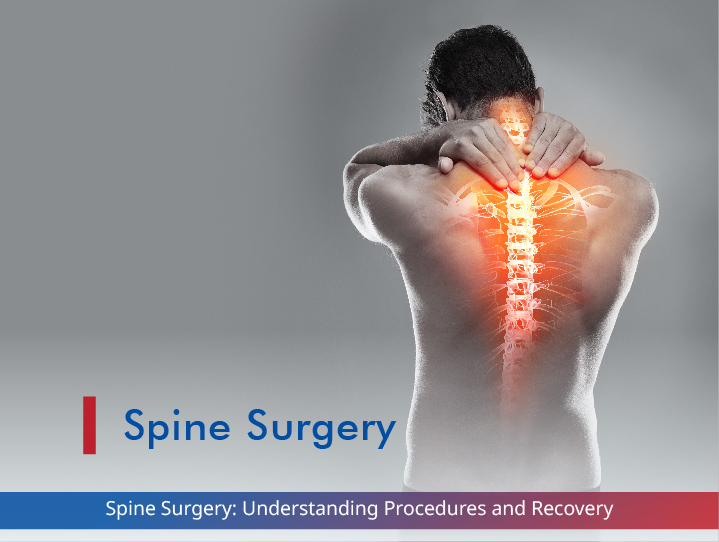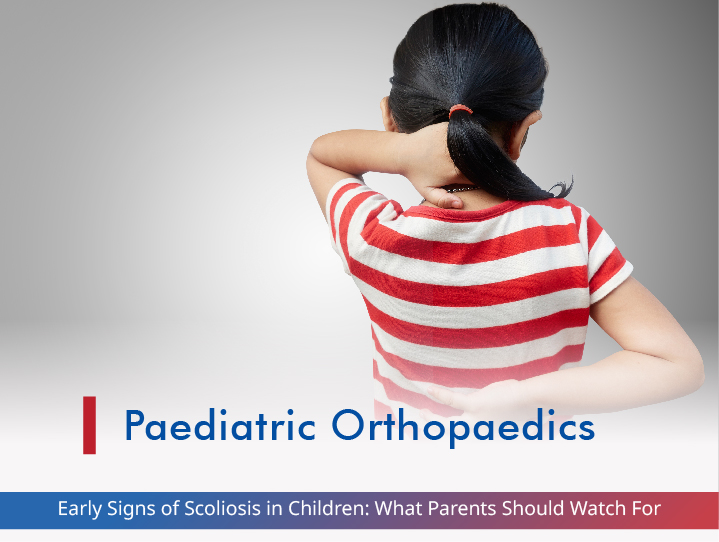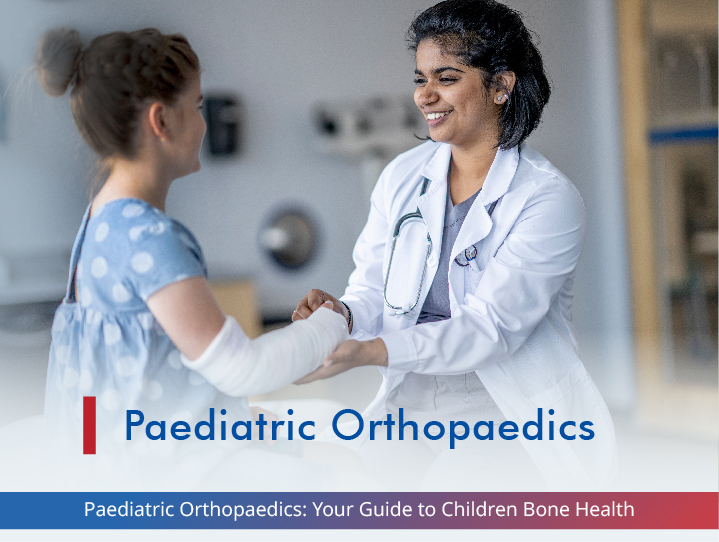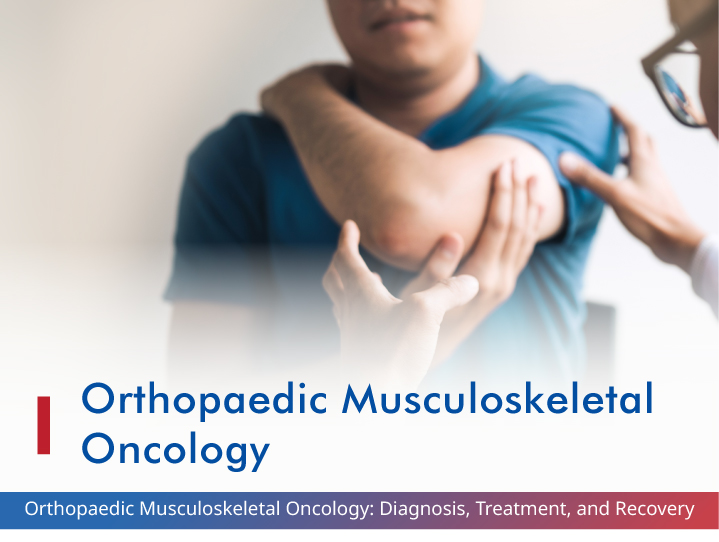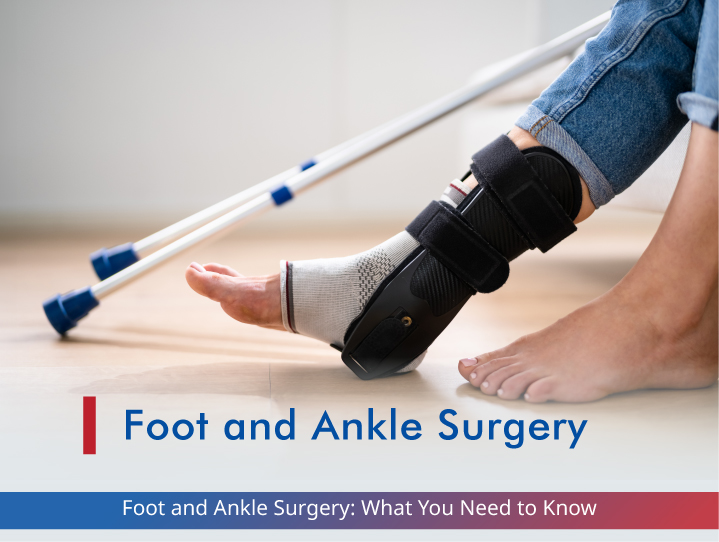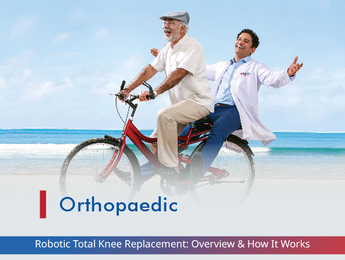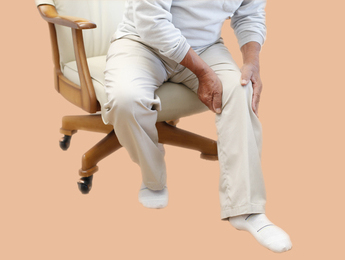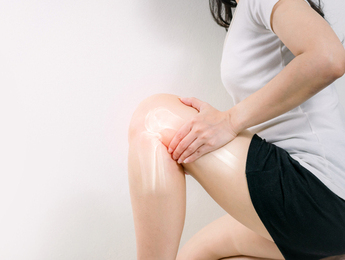What is Orthopaedics?

Orthopaedics is a specialised branch of medicine dedicated to the diagnosis, treatment and prevention of disorders related to the musculoskeletal system.
The musculoskeletal system is an intricate one consisting of the bones, joints, ligaments, tendons, and muscles that are essential to movement and everyday life. These structures are collectively responsible for providing structure and support in addition to movement to the body.
Orthopaedic surgeons are trained to address a wide range of conditions, from fractures to joint injuries in sports to degenerative diseases like arthritis in geriatrics. Their expertise includes both surgical and non-surgical interventions aimed at restoring mobility, alleviating pain and improving the overall function of the musculoskeletal system.
What do Orthopaedic Surgeons Do?
Orthopaedic surgeons are medical specialists who diagnose, treat, and prevent musculoskeletal system disorders. This system includes bones, joints, ligaments, tendons, muscles, and nerves. These highly trained physicians perform various orthopaedic surgeries, from minimally invasive arthroscopic surgeries to complex joint replacements and spinal operations.
Their responsibilities include:
- Diagnosing bone and joint conditions
- Performing surgeries to repair fractures, correct deformities, and replace damaged joints
- Treating sports injuries and trauma
- Managing chronic conditions like arthritis and osteoporosis
- Prescribing medications and physical therapy
- Providing preventive care and patient education
Who Are Orthopaedic Surgeons and What Do They Treat?

Orthopaedic Surgeons are highly trained medical professionals in advanced orthopaedic surgeries dedicated to ensuring the optimal functioning of the musculoskeletal system. An orthopaedic surgeon is who you would have to see if you need orthopaedic treatment for conditions such as:
- Fractures
- Dislocations
- Joint pains
- Back or neck pain
- Sprains or other injuries that affect muscles, tendons and ligaments
- Bursitis
- Carpal Tunnel Syndrome
- Sports Injuries such as tendinitis, meniscal or ligament tears
- Conditions present at birth, such as clubfoot, hip dysplasia
- Scoliosis
- Cancer of the bone
Orthopaedic Surgeon vs. Orthopaedic Doctor: What’s the Difference?
While the terms “Orthopaedic Surgeon” and “Orthopaedic Doctor” are often used interchangeably, there is a subtle difference in their roles and capabilities:
Orthopaedic Doctor:
- Also known as an orthopaedist or orthopaedic physician
- Specialises in diagnosing and treating musculoskeletal conditions
- May use non-surgical methods like medication, physical therapy, and injections
- Can refer patients to orthopaedic surgeons when necessary
Orthopaedic Surgeon:
- Has additional training in surgical procedures
- Performs both surgical and non-surgical treatments
- Can handle complex cases requiring operative intervention
- Often subspecializes in specific areas like sports medicine or joint replacement
Both Orthopaedic Doctors and Orthopaedic Surgeons complete medical school and residency in orthopaedics. However, surgeons undergo additional fellowship training in surgical techniques. In practice, many orthopaedic specialists are both doctors and surgeons, offering a full range of treatments from conservative management to advanced surgical procedures.
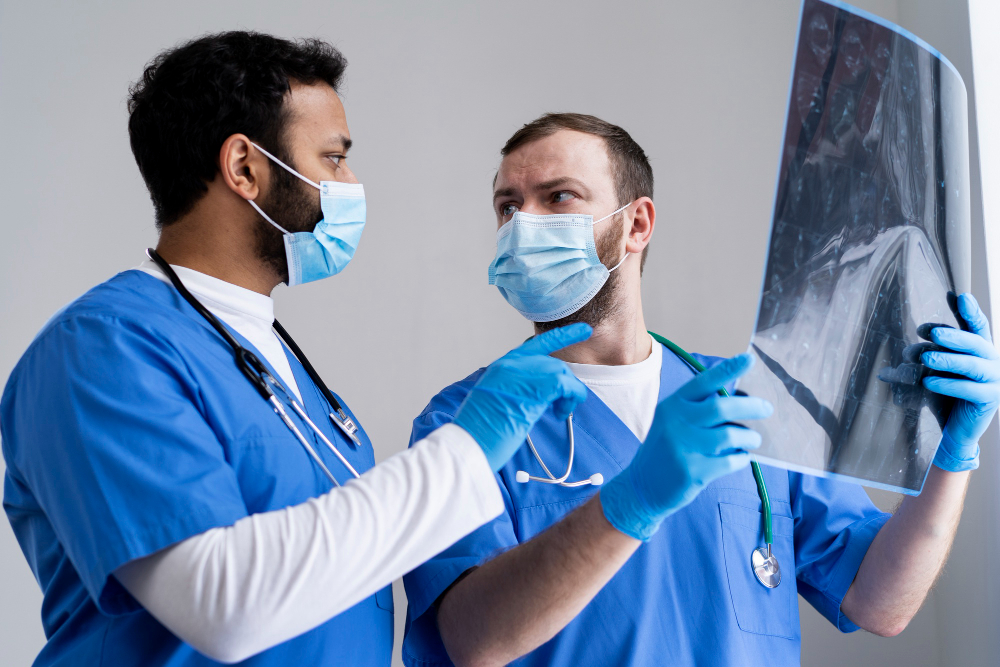
Orthopaedic Specialties
Since orthopaedics covers a vast array of conditions, many of the orthopaedic surgeons choose sub-specialties to become an expert on. An orthopaedic surgeon can specialise in
Joint Replacement:
This is one of the most common subspecialties that orthopaedic surgeons specialise in. They specifically take care of damaged or joints worn out due to age, wear and tear or overuse. The hip and knee are the most commonly replaced joints.
Sports Medicine:
Many orthopaedic surgeons train in sports medicine. This specialty training allows them to better treat athletes and active people for sport-related injuries and conditions affecting the musculoskeletal system. Sports medicine experts can improve performance, and make sure that when patients do become injured, methods of physical therapy and exercise are used to treat the injury, maximise function and mobility, and return the athlete back to their game as quickly as possible.
Trauma Surgery:
Some orthopaedic surgeons specialise in treating and doing surgery in the trauma unit following an accident or trauma.
Hand and Upper Limb Surgery:
Orthopaedic surgeons can also choose to specialise in certain body parts. Orthopedists that specialise in hand surgery, focus on diagnosing and treating injuries and conditions affecting the hand and upper extremities, such as carpal tunnel syndrome, fractures, trigger finger and other repetitive strain injuries of the upper limb.
Paediatric Orthopaedics:
Since children have a musculoskeletal system which is still growing and maturing, they handle trauma and healing differently from that of an adult body. Some orthopaedic surgeons are trained to take care of children, with specialised training in paediatrics. Paediatric orthopaedics help treat children suffering from orthopaedic issues, including scoliosis, clubfoot, bone and joint infections, abnormal growth process and other spine issues.
Spine Surgery:
Orthopaedic surgeons can specialise in treating injury and conditions affecting the spine due to disease, degeneration, or trauma.
Foot and Ankle Orthopaedics:
Like the orthopaedic surgeons specialising in the upper extremity, some surgeons may opt to specialise in the foot and ankle and see cases in trauma such as fractures involving the ankle or the foot, arthritis care (primarily surgical) of the ankle joint and the joints of the foot, congenital and acquired deformities including flatfoot, non-neuromuscular foot deformity, diabetic foot disorders, hallux valgus and several common paediatric foot and ankle conditions, proper diagnosis and treatment of heel pain (such as a consequence from plantar heel fasciitis), nerve disorders (such as tarsal tunnel syndrome) and tumours of the foot and ankle
Orthopaedic Oncology:
Orthopaedic oncologists specialise in the diagnosis and treatment of bone and soft tissue tumours- both benign and malignant
ORTHOPAEDIC DIAGNOSTICS
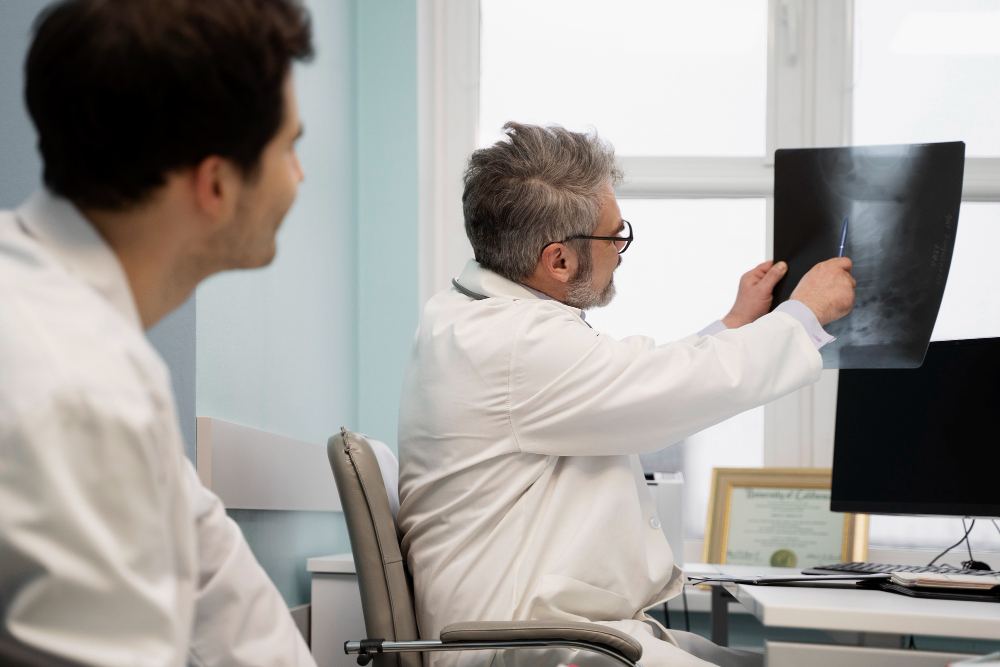
A wide range of assessments and orthopedic diagnosis tests are used to evaluate musculoskeletal conditions. They aid the doctors in accurate diagnosis and in determining the most appropriate treatment plan. Some of the common diagnostic tools include
Medical History and Physical examination:
The first step would involve taking a detailed medical history of the condition and any other relevant history of existing conditions. A thorough physical examination would be conducted to determine strength, stability, range of motion and tenderness in the affected area.
Imaging studies:
Imaging studies, if necessary, will be requested based on the impression gained in the physical examination and medical history. These imaging studies help in visualising the internal structures in varying degrees of clarity.
X-ray:
An x-ray is the most basic and easily accessible of the imaging studies and will reveal fractures, dislocations, arthritic changes and some kinds of tumours.
MRI or Magnetic Resonance Imaging:
An MRI uses a combination of a large magnet, radio frequencies and a computer to produce detailed images of organs and structures within the body. In addition to bone structure, an MRI will also be able to pick up images of the soft tissues such as cartilage, muscles, and tendons for injuries, herniation or degeneration of discs of the spinal cord.
CT scan or Computed Tomography:
This uses a combination of X-rays and computer technology to produce cross-sectional images of the bones, joints and surrounding structures giving detailed information about complex fractures, joint abnormalities and tumours. A CT scan can be done when the X-Ray and physical examination results are inconclusive.
Ultrasound:
It uses sound waves for creating images of the soft tissues. It can be used in evaluating tendons, ligaments and other structures.
Blood Tests:
Blood tests can give valuable information like inflammatory markers, calcium and Vitamin D or rheumatoid factors in rheumatoid arthritis.
Arthroscopy:
Arthroscopy involves inserting a small camera into a joint through a tiny incision to visualise the joint. This aids in diagnosis of torn ligaments, cartilage damage and loose bodies inside the joint.
Bone Density Testing (DXA Scan):
DEXA stands for ‘dual-energy X-ray absorptiometry’ and uses low levels of X-ray to measure the density of your bones. This can be used to diagnose osteoporosis and your risk for fracture.
Nerve Conduction Studies and Electromyography (EMG):
This is used to evaluate the functioning of the nerve and the muscle’s response to the stimulation of the nerve. It is used to diagnose radiculopathy, carpal tunnel syndrome or other peripheral neuropathies.
Biopsy:
In cases where a tumour or a muscular dystrophy is suspected, a biopsy may be taken for further study to confirm diagnosis or to determine malignancy.
Genetic testing:
Genetic testing may be recommended to test for hereditary factors that may have contributed to the musculoskeletal condition as seen in certain types of muscular dystrophy.
ORTHOPAEDIC SURGERIES
Just because orthopaedic surgeons are qualified in orthopedic surgeries doesn’t mean they will always do surgeries. Reputable orthopaedic specialists backed by robust health care systems are more likely to restore lives using non-surgical techniques like anti-inflammatory medications, immobilisation, physical therapy and steroid injections. Surgeries are only resorted to when all other forms of management fail.
Some of the most commonly performed orthopaedic surgeries are:
ACL Reconstruction Surgery:
The ACL or Anterior Cruciate Ligament is one of the major ligaments in your knee and is responsible for the stability of your knee. Partial or complete tear of this ligament is usually seen in athletes and leads to an unstable knee.
Using an arthroscope, the surgeon replaces the torn ligament with a graft of replacement tissue. It is a day procedure and the patient can usually go home on the same day.
Knee Replacement Surgery:
Cartilage damage in the knee either due to trauma or arthritis can lead to painful and restricted movement of the knee. In such conditions, the knee can be replaced partially or totally with a prosthetic joint. With modern advances in orthopaedic surgeries, a knee replacement can be done as a day procedure where the patient is free to go home on the same day as the surgery.
Shoulder Replacement Surgery:
In this surgery, the damaged parts of the shoulder are replaced with prostheses to reduce pain. Osteoarthritis, rotator cuff tear arthropathy, avascular necrosis, and rheumatoid arthritis are all common reasons for shoulder replacement surgery.
Hip Replacement Surgery:
Osteoarthritis, Rheumatoid arthritis, osteonecrosis, post-traumatic arthritis and childhood hip disease are all reasons which can lead to painful hip movements leading to limited ambulation and an unstable hip. A total or partial hip replacement can be done depending on the damage to the joint, with the aim of the patient being able to resume normal activities with a painless and stable hip.
Spinal surgeries:
Most back pain complaints can be managed with conservative medical treatment. However, if you do not respond to medication, various surgical procedures can be explored including minimal invasive procedures like a caudal epidural block to minimally invasive surgeries like microdiscectomy or spinal decompression and stabilisation procedures as the condition dictates. Some commonly performed procedures are:
- Spinal fusion: This procedure involves fusing two or more bones of the spine together to reduce pain, provide stability or to correct the curves of the spine.
- Laminectomy: It involves removing a portion of the vertebral bone called the lamina to relieve pressure on the spinal cord or nerves. It is used to treat conditions like herniated discs or spinal stenosis.
Rotator Cuff Repair:
This surgery is used to repair tendons in the shoulder usually seen in rotator cuff injuries in sports.
Fracture Repair:
Fracture repair involves aligning and stabilising broken bones using casting, splinting or surgically with plates, screws or rods.
Carpal Tunnel Release:
This procedure is used to release pressure on the median nerve in the carpal tunnel in the wrist for relief from pain and numbness caused by overuse.
Osteotomy:
Osteotomy is the cutting and repositioning of bones to correct deformities caused by osteoarthritis, to repair a damaged joint, to delay joint replacement in younger patients or to address any other specific bone issue.
Amputation:
In cases of severe trauma, infection or gangrene caused by advanced diabetes, amputation may be required to remove a damaged limb.
ORTHOPAEDIC WELLNESS
The concept of orthopaedic wellness has a holistic approach to maintaining and improving the health and functionality of the musculoskeletal system. It involves proactive measures, lifestyle choices and practices that contribute to the overall wellbeing of bones, muscles and their structural integrity. Some of the key points that are included in the concept of orthopaedic wellness include:
Regular Exercise:
Regular exercise helps in strengthening muscles and maintaining healthy bone density. Your exercise routine should include strength building and resistance training.
Flexibility and Stretching:
Regular stretching of the muscles helps maintain sufficient muscle length which in turn goes a long way in maintaining joint mobility and body flexibility. Stretching helps to reduce risks of muscle strain, stiffness and other injuries.
Maintaining correct posture:
Being aware of maintaining correct posture while sitting, standing and moving helps distribute weight evenly across the joints and reduces the risk of developing back pain due to postural deformities.
Ergonomics:
In occupational settings, it is very important to ensure that workspace is ergonomically suitable to individual body mechanics. This helps in preventing muscle strain.
Nutrition and Weight Management:
A well-balanced diet rich in calcium, vitamin D, protein and omega-3 fatty acids promote healthy bone development, maintenance and repair. It helps in preventing conditions like osteoporosis.
Maintaining a healthy body weight along with strengthening helps in reducing the load on joints such as the knees and hips. This helps to alleviate pain in conditions like osteoarthritis.
Stress management:
Chronic stress can contribute to muscle tension and pain. Meditation, yoga and deep breathing exercises can help in relaxing muscles and reducing the negative impact of stress.
Regular screenings:
Periodic visits to an orthopaedic specialist to address any emerging musculoskeletal issues can prevent progression of these conditions.
Following the concept of orthopaedic wellness is much the same way as improving our cardiovascular health to prevent an adverse cardiac event. The fact that prevention is better than cure is the key here.
ADVANCEMENTS IN ORTHOPAEDICS
Advancements in orthopaedics have significantly improved the diagnostics, treatment and outcome. Some of the recent advancements in orthopaedics are:
Minimally Invasive Surgery:
Minimally Invasive Surgery involves surgery through small incisions instead of one large opening and is often referred to as keyhole surgeries. Since this causes less trauma to the surrounding soft tissues, the patient has less discomfort and a faster recovery period. Arthroscopy, a form of minimally invasive surgery, is one of the most commonly performed orthopaedic surgeries today. Joint replacements are also now being performed using the minimally invasive technique.
3D Printing:
Within the field of orthopaedic surgery, 3D printing has impacted patient care and education in several orthopaedic subspecialties. Three-dimensional printed anatomic models are commonly used in preoperative planning. For many orthopaedic procedures, including arthroplasty and complex reconstructions, the use of 3D-printed patient-specific instrumentation (PSI) has become commonplace. In addition, 3D bioprinting has significantly impacted bone and cartilage restoration procedures and has the potential to completely transform how patients with debilitating musculoskeletal injuries are treated.
Robotic Assisted Surgery:
Robotic systems provide the surgeon with enhanced control and precision. They are used for joint replacements, spinal surgeries and complex trauma cases and optimise implant placement and alignment.
Regenerative Medicine and Orthobiologics:
Biologics are therapies developed from natural sources that can be used to relieve pain in cases like early osteoarthritis and to enhance the body’s ability to heal after ligament strain or cartilage injuries. Platelet rich plasma injections and stem cell treatments are some techniques that have shown promise in regenerative medicine.
Smart Implants and Wearable Technology:
Orthopaedic implants used in orthopaedic surgeries now have smart sensors in them which provide real time data on implant stability, wear and tear and patient activity levels. These data help to improve implant design, surgical techniques and post operative strategies and rehabilitation.
Wearable devices can help monitor and track the patient post operatively. It can also be used to keep track of personal health and fitness parameters.
Biodegradable Implants:
Biodegradable implants are designed to break down in the body over time, thus reducing the need for a second surgery to remove the implant. This can be particularly beneficial in paediatric patients.
These advancements are only a few of those in the dynamic field of orthopaedics that continue to evolve, offering the patients better treatment options and improved outcomes. They reflect a commitment to improve the lives of millions of those incapacitated with orthopaedic concerns.
Conclusion
Orthopedics plays a vital role in maintaining our musculoskeletal health. Orthopaedic surgeons are highly skilled specialists who diagnose, treat, and prevent disorders affecting bones, joints, and muscles. From managing chronic conditions like arthritis to performing complex surgeries such as joint replacements, these professionals offer a wide range of care. They utilise both surgical and non-surgical approaches, including physical therapy and medication. Whether you’re an athlete recovering from an injury or someone dealing with age-related joint issues, orthopaedic surgeons are equipped to improve your quality of life. Their expertise ensures that patients receive comprehensive care, from initial diagnosis to rehabilitation, helping them regain mobility and lead pain-free lives.
Frequently Ask Questions (FAQs)
Who is called orthopaedic?
An orthopaedic specialist, also known as an orthopaedist, is a medical doctor who specializes in diagnosing, treating, and preventing disorders of the musculoskeletal system. This includes bones, joints, ligaments, tendons, muscles, and nerves. Orthopaedic specialists can be either non-surgical physicians or surgeons, depending on their specific training and expertise.
What does orthopaedic surgeon mean?
An orthopaedic surgeon is a medical doctor who has completed additional specialized training in surgical procedures for the musculoskeletal system. They are qualified to perform operations to repair, reconstruct, or replace damaged bones, joints, and soft tissues. Orthopaedic surgeons also provide non-surgical treatments and work closely with other healthcare professionals to manage patient care.
What is done in orthopaedics?
Orthopaedics involves a wide range of procedures and treatments for musculoskeletal conditions. This includes diagnosing injuries and disorders, performing surgeries like joint replacements and fracture repairs, administering non-surgical treatments such as medications and physical therapy, and providing preventive care. Orthopaedic specialists also conduct research to advance treatment methods and improve patient outcomes.
What is the treatment of orthopaedics?
Orthopaedic treatments vary widely depending on the specific condition. They can include:
- Non-surgical approaches: Physical therapy, medications, injections, and bracing
- Minimally invasive procedures: Arthroscopy for joint repairs
- Open surgeries: Joint replacements, spinal fusions, and fracture repairs
- Rehabilitation: Post-treatment exercises and therapy to restore function
- Preventive care: Lifestyle advice and exercises to maintain musculoskeletal health
What orthopaedic treats?
Orthopaedic specialists treat a broad spectrum of musculoskeletal conditions, including:
- Fractures and dislocations
- Arthritis and joint pain
- Sports injuries
- Spinal disorders
- Congenital deformities
- Bone tumors
- Tendon and ligament injuries
- Osteoporosis
- Carpal tunnel syndrome
- Pediatric musculoskeletal conditions

